The Papal Prophecy: Secrets, Signs, and the Future of the Pope
Curious about the Pope Prophecy? This gripping breakdown of signs, symbols, and secrets will have you questioning what comes next for the Vatican.
What if the fate of the world was scribbled in Latin centuries ago, sealed behind marble walls, and whispered through the halls of the Vatican?
That’s the chilling promise of the Pope Prophecy—an ancient and controversial prediction that has captivated believers, baffled skeptics, and sparked more than a few “conspiracy theories.”
According to legend, a 12th-century Irish bishop named Saint Malachy received a divine vision that foretold the identities of the next 112 Popes, from his own time to the final pontiff.
Each was encoded with cryptic phrases—some poetic, some eerie, some almost too accurate to ignore. Now, with Pope Francis’s death marking the end of the 112th line in Saint Malachy’s vision, speculation around the Pope Prophecy has surged once again. Many believe this moment—the vacancy of the Holy See—is the final chapter, the beginning of the end foretold nearly 900 years ago.
But is it all true? Or just a medieval hoax that refuses to die?
In this article, we’ll explore the origins, accuracy, and conspiracy surrounding this prophecy, unraveling the secrets behind conclaves, mysterious symbols, and whether a figure called “Peter the Roman” could herald the end—not just of a papacy—but of an age.
The Origins of the Pope Prophecy
Who Was Saint Malachy?
To understand the Pope Prophecy, we have to go back—way back—to the 12th century. Enter Saint Malachy, an Irish archbishop with a reputation for holiness, miracles, and visions. He wasn’t your average clergyman. During a visit to Rome in 1139, Malachy is said to have collapsed in a trance-like state, during which he received a revelation:
A vision of every future Pope from his era to the end of time.
And here’s where things get eerie.
He didn’t write names. Instead, Malachy allegedly penned 112 short Latin phrases, each describing a Pope through symbolic imagery—coats of arms, family lineage, locations, or cryptic clues.
Some sound like riddles.
Others strike a strange resemblance to real people and events.
Whether this vision was divinely inspired or not, it planted a seed of mystery that still blooms centuries later.
The Prophecy of the Popes Explained
So what do these 112 lines actually say?
Each entry is brief—sometimes only a few words—but they appear to line up (shockingly well) with the papacies of history. For example:
“Pastor et Nauta” (Shepherd and Sailor) was linked to Pope John XXIII, who came from a coastal city and served as patriarch of Venice.
“De Medietate Lunae” (From the Half of the Moon) was used for Pope John Paul I, who was elected during a half-moon and served just 33 days.
Spooky, right?
The final prophecy reads:
“In persecutione extrema S.R.E. sedebit Petrus Romanus...”
Translation: “In the extreme persecution of the Holy Roman Church, there will sit Peter the Roman...”
It describes a time of tribulation, destruction, and judgment—a final Pope who watches Rome burn before the end of the world.
But there’s a catch. The manuscript disappeared for centuries and only surfaced in the 1590s, which raises some very uncomfortable questions…
Historical Accuracy or Hoax?
Fulfilled Predictions (and Skeptics' Views)
Here’s where things get interesting—and murky.
Supporters of the Pope Prophecy point to uncanny matches between Saint Malachy’s cryptic phrases and real-life Popes. For example:
“Flos florum” (Flower of flowers) for Pope Paul VI, whose coat of arms bore a fleur-de-lis.
“De labore solis” (From the labor of the sun) for Pope John Paul II, born during a solar eclipse and buried during one too.
Coincidence? Divine precision? The debate rages on.
Yet what skeptics point out isn’t just a counterpunch—it might be something far more disturbing.
Nearly all the “spot-on” matches in the Pope Prophecy occur before it was first published in 1595—more than 450 years after Saint Malachy’s death.
After that?
The cryptic phrases grow muddy, metaphorical, even lazy—suddenly wide open to interpretation and conveniently vague.
That doesn’t smell like prophecy.
That smells like planning.
Many argue the list was forged or altered, likely by powerful factions within the Church looking to steer papal elections during volatile times.
And not just for one election, either.
No, if this theory holds, we’re talking about a multi-century manipulation strategy—a slow-burning con, orchestrated by a Church hierarchy so obsessed with control, it cloaked itself in ancient mysticism to push chosen candidates into the Chair of Saint Peter.
Imagine the ambition: planting a “prophecy,” letting it marinate in legend, and using it as divine marketing.
“He’s the one foretold by God,” they’d say.
And who would dare argue with that?
It’s not just propaganda. It’s theology weaponized.
And maybe that’s the real horror. Not that the prophecy is false—but that it was built to be believed. That it was never a warning of the end… but the long, careful setup to it.
The frog isn’t leaping from the pot.
It’s been simmering for 500 years.
True or False, I leave to you.
For now, let’s go back to its discovery.
How It Surfaced in the 16th Century
The prophecy was first printed in a book called Lignum Vitae by Benedictine monk Arnold de Wyon in 1595. That timing is… suspicious.
Why?
Because a contentious papal election had just occurred. Some historians believe the prophecy was created or "discovered" to sway opinion toward a specific cardinal. Basically: a Vatican version of a smear campaign—just with Latin riddles instead of attack ads.
Others believe the document could’ve been edited or “touched up” before publication to retroactively match past Popes, creating an illusion of foresight.
Still, true believers insist it’s the real deal.
So which is it?
A miraculous vision from a sainted seer?
Or a Renaissance-era PR stunt gone viral?
Either way, the idea stuck.
Modern Relevance of the Pope Prophecy
Pope Benedict XVI and “Glory of the Olive”
When Pope Benedict XVI was elected in 2005, all eyes turned to prophecy line #111:
“Gloria Olivae” — The Glory of the Olive.
At first glance, it’s a stretch. He wasn’t particularly tied to olives or agriculture. But prophecy fans got creative.
Some pointed to the Olivetans, a branch of the Benedictine Order, loosely tied to the olive branch both in name and iconography. Others suggested that the olive—often seen as a symbol of peace—fit his conservative yet scholarly leadership style.
Like many prophecies, it felt vague—until it didn’t.
In 2013, Benedict stunned the world by resigning—the first pope to do so in nearly 600 years. The ripple effect was immediate.
Prophecy theorists asked:
Was this the final act before the storm?
Was he stepping aside… to let the last pope take the throne?
Pope Francis: The Final Pope? Or Just a Shadow?
Enter Pope Francis, the 112th name on Malachy’s list.
The final line reads like a hammer blow:
“In the extreme persecution of the Holy Roman Church, there will sit Peter the Roman, who will nourish the sheep in many tribulations. After which, the city of seven hills shall be destroyed, and the dreadful Judge shall judge his people. The end.”
The 112th pope. That should be the end of it… right?
Not so fast.
Here’s where things fracture—and conspiracy steps in.
Despite being the next official pope, Francis doesn’t match the name “Peter,” nor is he Roman by birth. He’s Jorge Mario Bergoglio from Argentina. But some argue the titles are symbolic:
“Peter” as a return to apostolic roots
“Roman” as a reference to the Papal office itself
But others go further—much further.
They point to a legitimacy controversy that split the Church quietly, but deeply.
When Benedict resigned, many within the Catholic world—and especially within the traditionalist factions—never accepted Francis as the true pope.
Benedict, they argue, never truly relinquished the spiritual office of the papacy—only the administrative functions. He retained the white papal garments, continued to live within the Vatican walls, and adopted the title “Pope Emeritus”—a designation without precedent in the Church’s long and precise canonical history.
But what began as subtle oddities became the foundation of a full-blown theological revolt.
Among the most vocal challengers is Archbishop Carlo Maria Viganò, who now openly claims that Pope Benedict XVI’s 2013 resignation was invalid. And if Benedict never validly resigned, then Francis’s election was canonically impossible.
According to Viganò, this means the Holy See was never truly vacant, and Jorge Mario Bergoglio was never a legitimate pope.
The argument hinges on four central allegations:
Grave irregularities in the 2013 conclave, including claims of political lobbying by figures like ex-Cardinal Theodore McCarrick, which may have violated Pope John Paul II’s conclave law (Universi Dominici Gregis).
A defect of consent—allegedly, Bergoglio may have privately resisted or hesitated in accepting the office, casting doubt on his free acceptance of the role. Even his sister didn’t want him to be pope.
That Bergoglio was a public heretic before the conclave, which, under Pope Paul IV’s 1559 bull Cum ex Apostolatus Officio, would render his election null and void, regardless of how many cardinals voted for him. Some of the heresies? There’s a lot.
And finally, that Benedict’s own abdication lacked legal clarity—he may have relinquished the “active ministry” of the papacy, but not the munus, the ontological office of the Vicar of Christ.
If even one of these claims is valid, it would mean Francis was an antipope—and that the next pope would not be #113, but rather the true 112th on Malachy’s list.
Meaning the seat now empty—this next pope—may in fact be the final name on the list.
Who Could Be “Peter the Roman”? A Look at the Current Front-Runners
With the Chair of Saint Peter now vacant, the eyes of prophecy-watchers have shifted from the past to the present. If the 112th pope is indeed yet to come—as many now argue—then the next man to wear the white cassock could be the legendary “Peter the Roman,” the shepherd who leads the Church through fire, famine, and final judgment.
So… who among the current front-runners fits the role?
Let’s examine the contenders through a prophetic lens:
Cardinal Jean-Marc Aveline (France)
Least likely, though not out of the question.
Pros: Represents inclusivity, dialogue, and care for the global South—very much in the spirit of Pope Francis. Close to migrants and interfaith work, which resonates with Rome’s current outreach.
Cons: Not Roman by blood, not named Peter, and not especially aligned with apocalyptic imagery. Also does not speak fluent Italian, a real handicap in an Italian-dominated conclave.
Prophetic fit: Weak on all literal fronts—more a symbolic match to Francis’s ideals than Malachy’s warning.
Cardinal Matteo Zuppi (Italy)
A beloved figure within the Church, but unlikely to fulfill the prophecy’s darker undertones.
Pros: Italian, Rome-connected, pastoral, and known as a peacemaker—key traits if “Peter the Roman” is more about role than name.
Cons: Lacks the prophetic name or decisive “tribulation” aura. He’s a healer, not a herald of destruction.
Prophetic fit: He could be the shepherd in the storm, but his style suggests prevention, not judgment. Better fit for “bridge-builder pope” than end-times icon.
Cardinal Pierbattista Pizzaballa (Italy)
A wild card with increasing relevance.
Pros: Italian by birth, serves in the Holy Land (Jerusalem), and has demonstrated sacrificial leadership—offering himself for hostages, celebrating Mass under bombs.
Cons: Still relatively young and less connected to the Roman political machine. Not named Peter, and might be considered too polarizing geopolitically.
Prophetic fit: Strong symbolic resonance. A man who leads through fire and siege. If prophecy is about action over ancestry, he’s in the conversation.
Cardinal Pietro Parolin (Italy)
Nearly perfect prophetic fit—but maybe too perfect.
Pros: Named Pietro, Italian-born, raised entirely within the Vatican power structure—literally Peter the Roman. He’s a skilled diplomat, well-liked, and utterly Roman in orientation.
Cons: His very perfection might work against him in a conclave sensitive to appearing manipulated. And if the prophecy was forged—was he its endgame?
Prophetic fit: On paper, he is the prophecy. The question is whether his election would fulfill it… or expose it.
The “Hidden Peter” Theory
And then there's the wild card:
What if none of the front-runners are Peter the Roman?
What if the real final Pope is not in the spotlight?
Some prophecy scholars suggest “Peter the Roman” will not be elected through consensus, but forced into power by catastrophe. War. Collapse. A second schism. In this theory, Peter is the Pope of necessity, rising from the ashes.
A rogue bishop.
A papal refugee.
A name we don’t yet know.
As Shakespeare cautioned through the lips of Polonius in Hamlet:
“We are oft to blame in this—’tis too much proved—
That with devotion’s visage and pious action
We do sugar o’er the devil himself.”
How often have we seen holy robes mask unholy motives?
How many times has “pious action” been the perfect disguise for corruption, cruelty, or quiet consent?
The Vatican, with all its incense and Latin rites, may offer sanctuary and solace—but it has also served as a curtain. And behind that curtain, prophecy, politics, and power have danced hand in hand.
Whether you lean toward prophecy, coincidence, or cynical curiosity, the conclave now convening could fulfill a legend nearly 900 years in the making. One of these men may carry the weight of that final name. The one who leads not in triumph… but in tribulation.
And the world will be watching for the smoke.
FAQs About the Pope Prophecy
1. What exactly is the Pope Prophecy?
The Pope Prophecy refers to a list of 112 short, symbolic phrases supposedly written by Saint Malachy in the 12th century, predicting the identity or traits of each Pope from his time to the final New Pope—believed by some to be alive today. The last entry warns of “Peter the Roman,” who will rule during a time of great tribulation and the destruction of Rome.
2. Has the Pope Prophecy been accurate so far?
Supporters argue that many past phrases—like “Glory of the Olive” or “From the Half of the Moon”—accurately reflect the lives or symbols of historical Popes. Skeptics point out that most clear matches happen before the prophecy was published in 1595, suggesting possible backdating or manipulation. Interpretations after that become far more symbolic, often stretched to fit the narrative.
3. Is the next Pope the last Pope on the list?
No and Yes—according to Saint Malachy's list, the 112th pope will be the final Pope. The prophecy describes this figure as "Peter the Roman," who will lead the Church through persecution before a final judgment. Some believe this means Pope Francis was the last Pope, while others think the real "Peter" is still to come.
4. Why do people link the Pope to the Antichrist or the False Prophet?
In Revelation 13, the False Prophet is described as a beast with “horns like a lamb” who deceives the world into worshipping the Antichrist. Because the Pope holds massive religious authority and presents himself as Christ’s representative on Earth, some believe he fits this archetype. It's a controversial view, mostly held by fringe prophecy theorists and some evangelical groups.


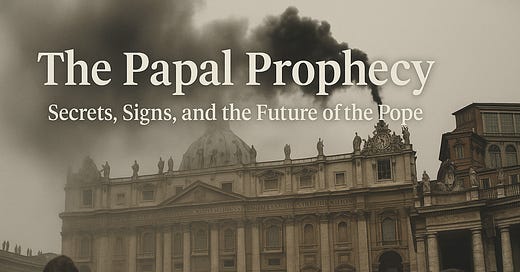




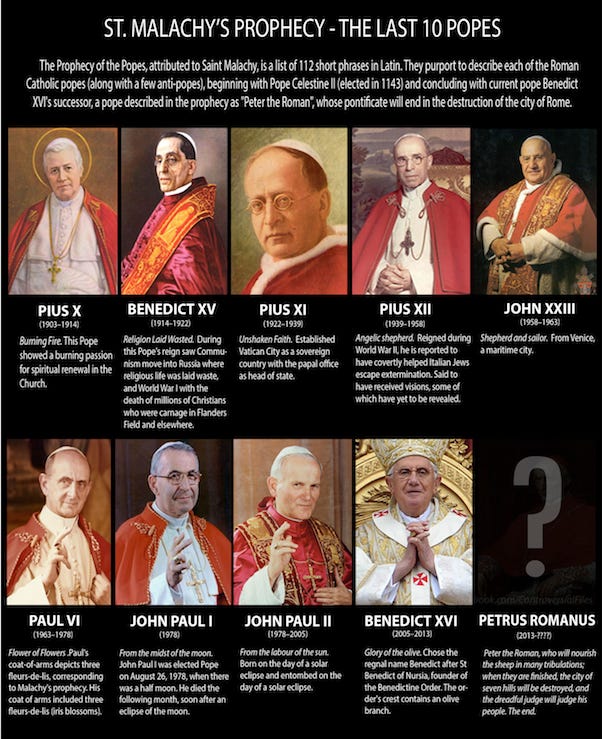
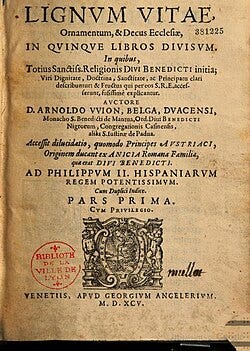
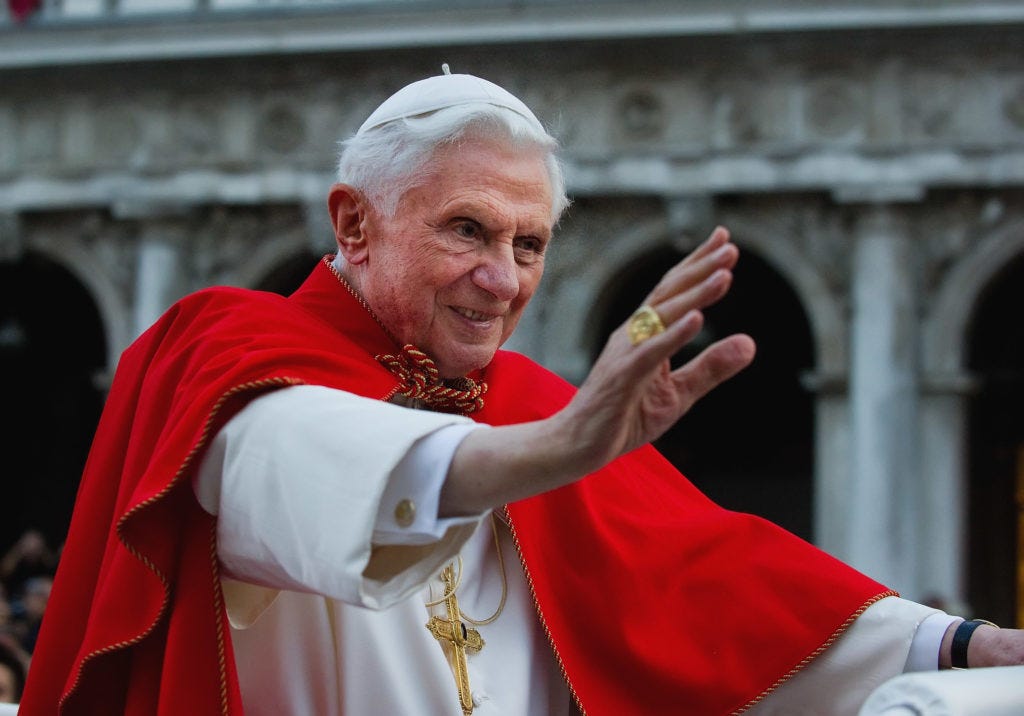
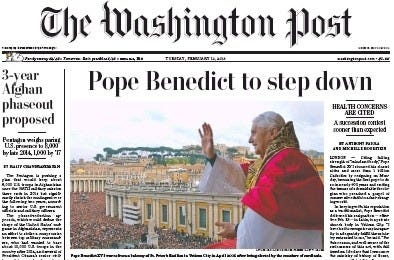
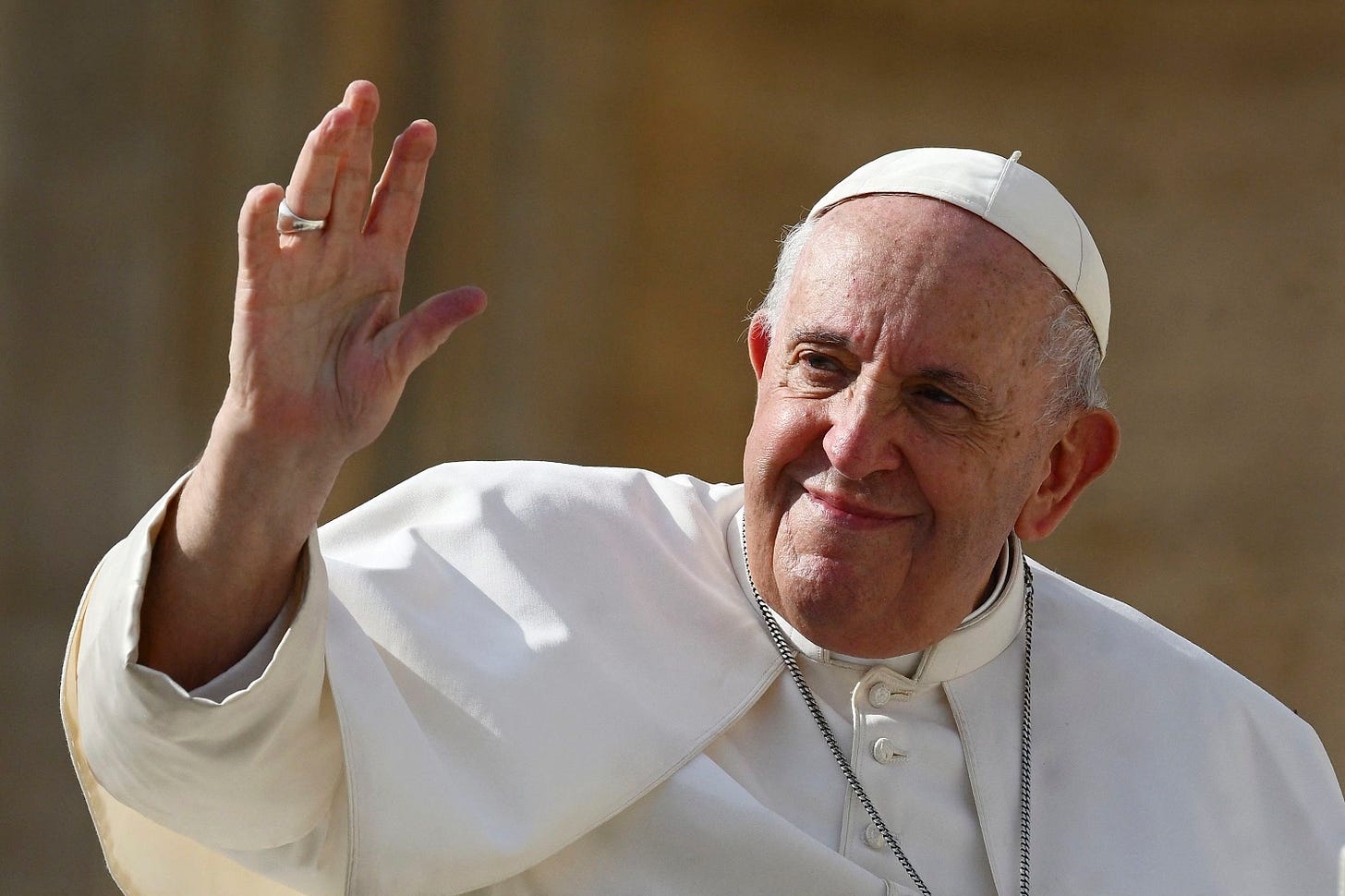
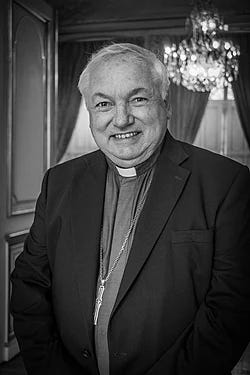
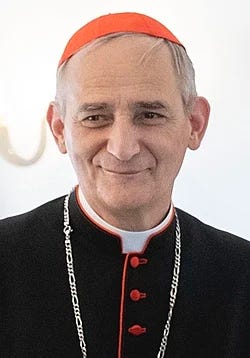
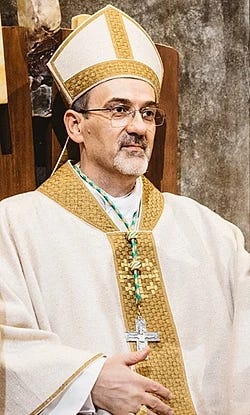
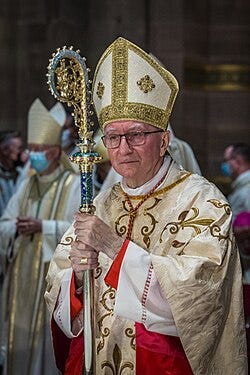

Before the word, there was sound. Resonance is and will always be. Universal_Law1
Revelation chapter 18 King James Bible shows the future of the Vatican.